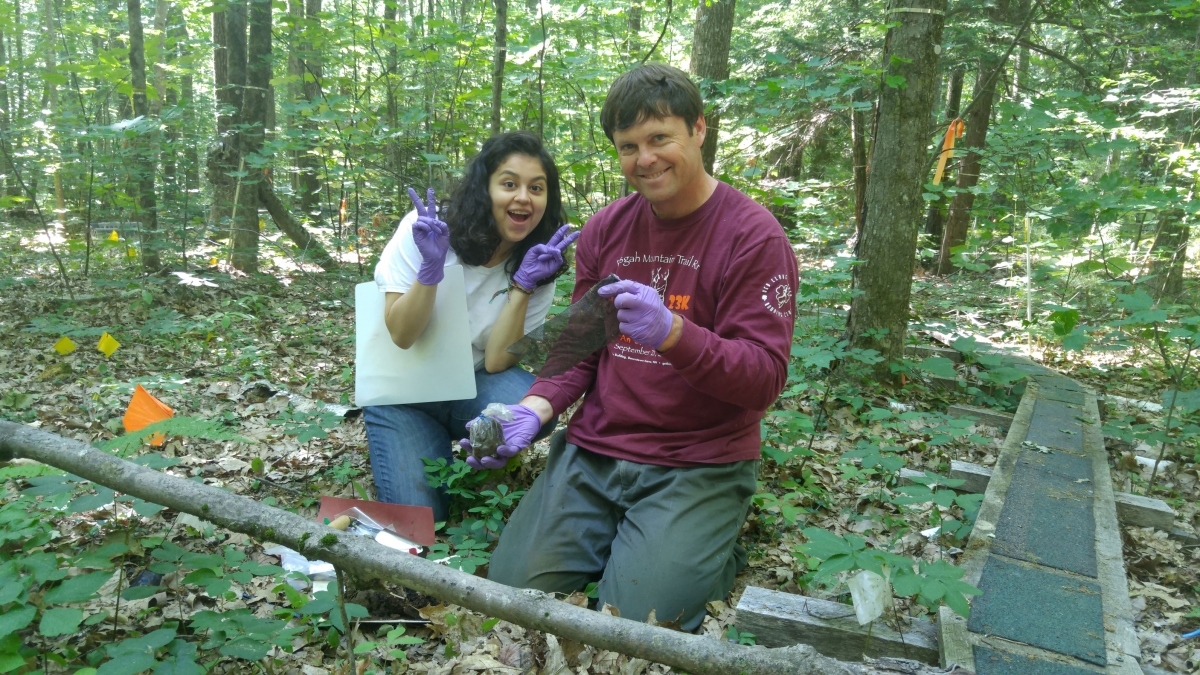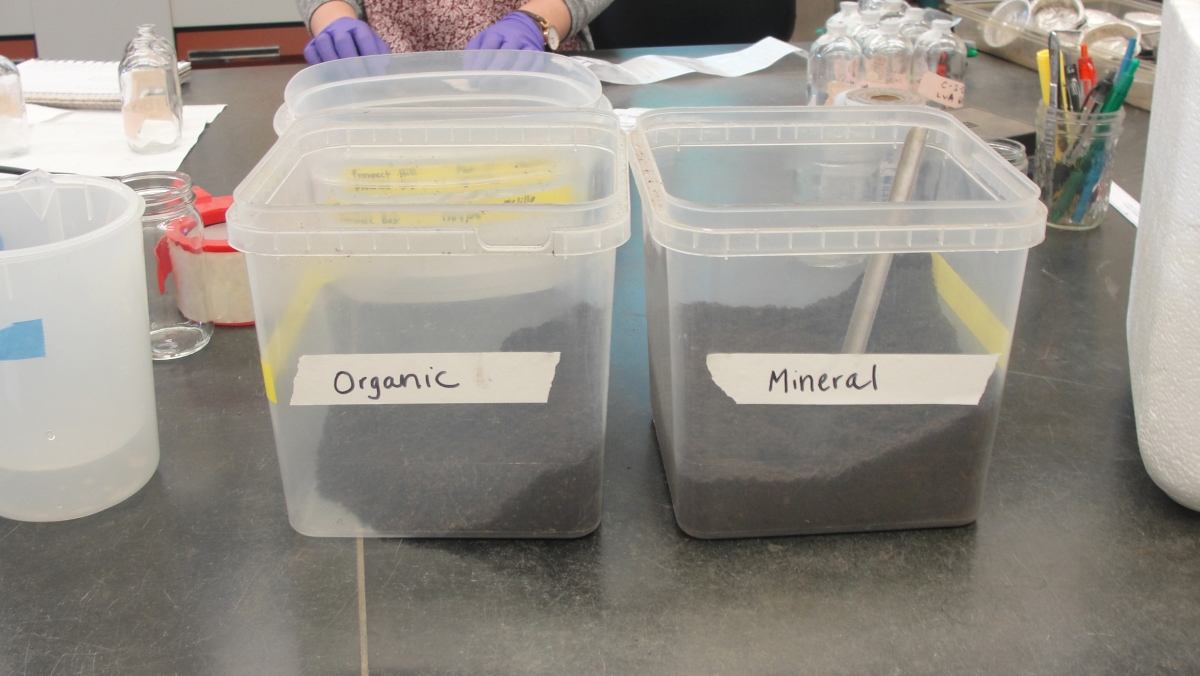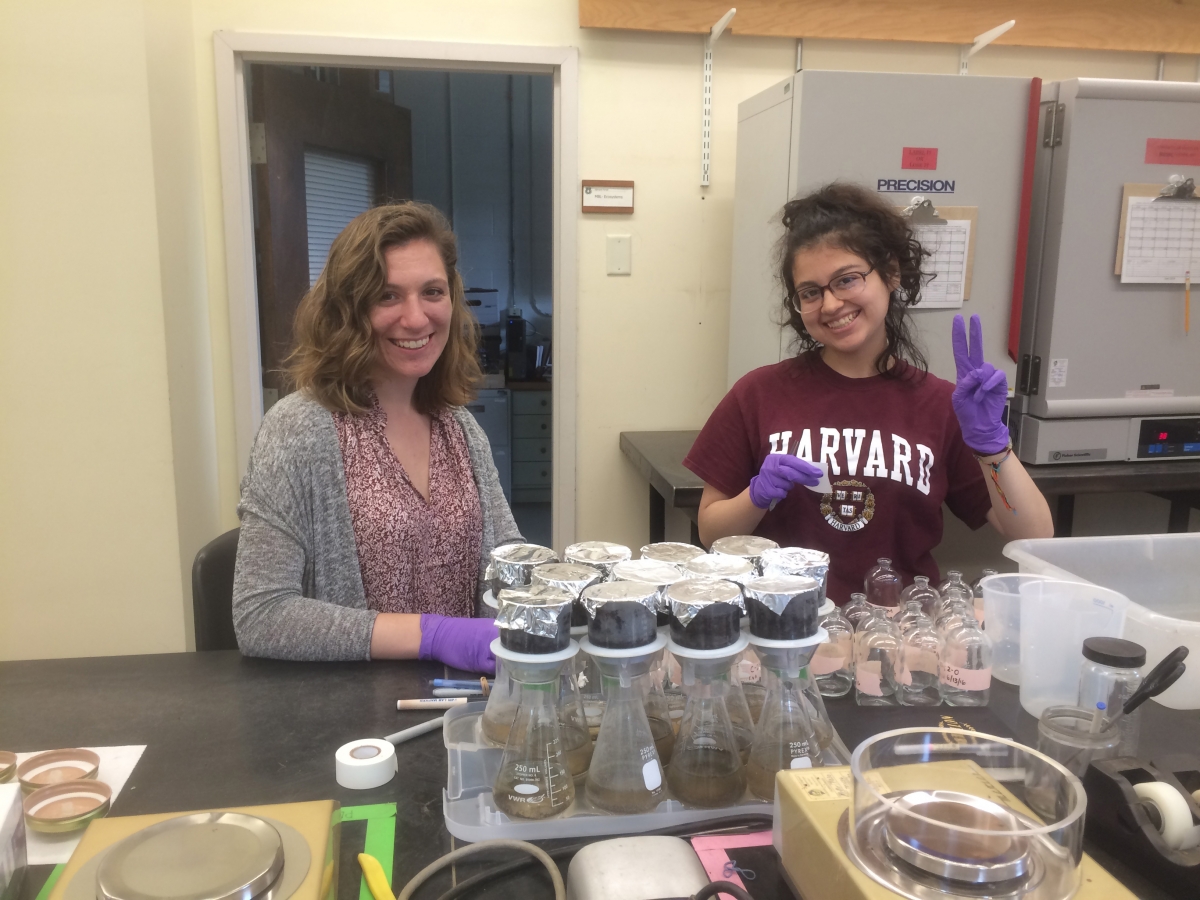You are here
Knowing the Dirt on Soil Microbial Respiration
I’ve been avoiding this for so long. No matter how cool I think this project is and no matter how much I love experimenting on these tiny organisms, I keep it hidden from her. She has no idea what I’m doing. I know that she'll find out eventually, but for now I've been keeping it hushed up. She knows I’m in the boonies doing scientific research for Harvard Forest under the mentorship of Lauren Alteio and Jeffrey Blanchard, but she doesn’t know I’m working on the effects of climate change on microbial communities in the soil. Sure, it sounds super science-y and complicated, but once I explain the process to her, she'll get so frustrated and confused.
Let me explain. I’m talking about my mom. She’s not a science geek and doesn’t really understand that much about microbiology, environmental science or any other branches within scientific studies. She’s an accountant, for crying out loud! How am I going to tell her that for the past two months I’ve been putting dirt into jars? She will think it’s such a waste of time! In her confusion she might ask me, “Were you gardening? Were you planting something in those jars?” How can I tell her that I wasn’t gardening and that instead I was using a large syringe to take air, yes, air from jars full of dirt and inserting the air into a machine called an IRGA (Infrared Gas Analyzer)? Instead of verbally telling her, I’m writing this blog. Mom, this is for you.
Okay, I’m going to try to be as clear as possible. Remember how I mentioned climate change? Well, climate change is fluctuation in the global climate patterns and is attributed to the increased emissions of carbon dioxide (CO2) that build up in the atmosphere. Carbon dioxide and other greenhouse gases form a thick shield that absorbs infrared radiation from the sun. Some of it bounces back to space, but because there’s more and more of these gases, Earth’s surface is holding onto too much heat. This is causing serious warming and climate change issues.
When microbes in the soil are warmed up, the organisms in the soils respire a whole lot more. Let’s try something: I want you to breathe in, hold it for two seconds, and respire it out. When you exhaled that air, you released carbon dioxide, and these microbes do the same. Recently, there has been an increase in carbon dioxide emissions from the organisms in the soil, adding to the greenhouse gas effect. But there are innumerable organisms that make the soil their home and we can’t tell which ones are responsible for this increase in respiration. The image above shows two buckets with two types of soil, organic and mineral. Samples of this soil were taken from a plot at Prospect Hill in Harvard Forest, and they are crucial for the experiment. This summer, our goal is to use these nifty soil samples in order to identify the organisms that are responsible for higher carbon dioxide emissions through their respiration.
We know that the organisms that respire more require water in order to be active. Water molecules are used as electron acceptors in respiration, which means that water is essential for respiration. All organisms have water, but we can trace differences in the soil’s nutrient cycle with stable isotope probing. We do this by using water! Water in this case is our much needed substrate that has been refined with a stable and heavier isotope of hydrogen called deuterium (D2O). We trace where the deuterium goes to trace the water and the respiration along with it. You can just think of it as feeding soil organisms heavy water.
Right now we are focusing our experiment a little bit more on whether or not heavy water is toxic for these organisms. Some studies have found that high deuterium concentrations are actually very toxic to organisms. We are using different concentrations of deuterium: 25%, 50%, 100% D2O and one control group that contains no deuterium at all. Since we are aware that deuterium is toxic in high amounts, we expect that 100% deuterium will suppress these organisms from respiring. Sure, a lot of things are bad in large amounts, but we just want to test it out and see what quantities of deuterium we can use on these organisms. That way it becomes easy and safe to use when attempting to find who these heavy respirers are.
My job isn’t just to sit in a lab all day and stab jars with needles to see how much carbon dioxide these organisms are releasing with the different concentrations of deuterium. It starts with me going into Prospect Hill at Harvard Forest, where they have some really cool soil warming plots. Our soil samples are collected just outside of the warming plots, but in their general area. We use these long ‘T’ shaped tools called corers. We stab the corers down into the dirt and pull them out to gather mineral and organic soil samples. The organic soil is usually at the top and has the most leaf litter, while the mineral soil is heavier and more like moon sand. We gathered about 12 samples of each type of soil for our experiments and brought them back to Torrey Lab at Harvard Forest.
In Torrey Lab we put 1 gram of soil into these serum bottles (the jars that I’ve been referring to all along). We also add a piece of filter paper. The filter paper is supposed to allow the water that we add to flow all throughout the soil in the serum bottles.
We are currently using laboratories at the University of Massachusetts at Amherst to take carbon dioxide samples from our serum bottles with soil. We use rubber stoppers to close the jars up so the carbon dioxide does not escape. I then use a syringe to get the carbon air, and I put it into the IRGA to measure how much carbon dioxide was produced. Afterwards, I take off the rubber stoppers and let the soil breathe for 10 minutes. This prevents excess gas build up and it takes away pressure from the serum bottles.
I know, Mom, it’s a lot to do with some silly jars and dirt, but I’ve been having a blast! Who would have thought that soil microbes were this much fun? Just know that the soil, as quiet and still as it is, contains a whole world of species that matter just as much as we do. They balance out everything on planet Earth, and we couldn’t be here without them.
#SoilMicrobesareAwesome




